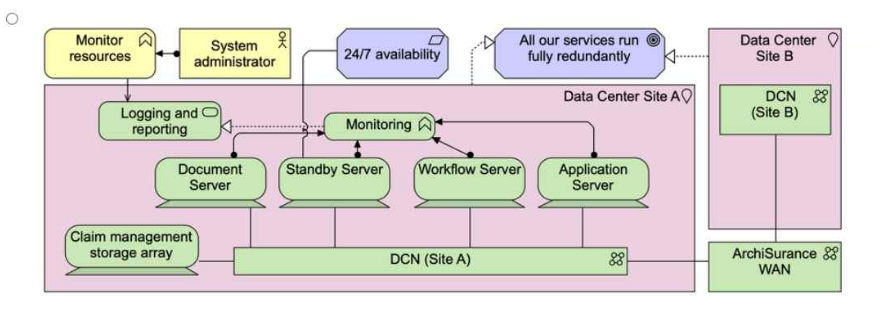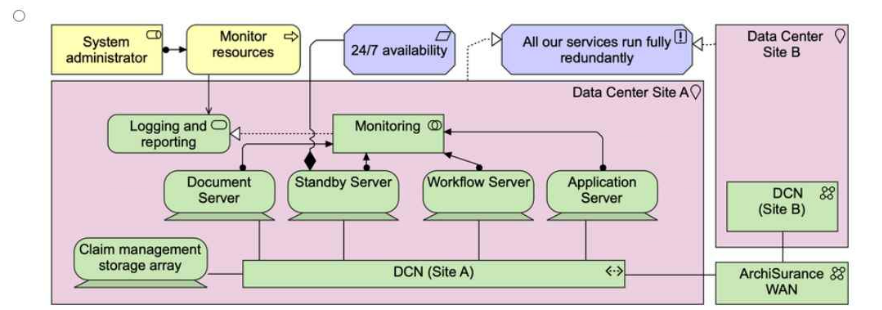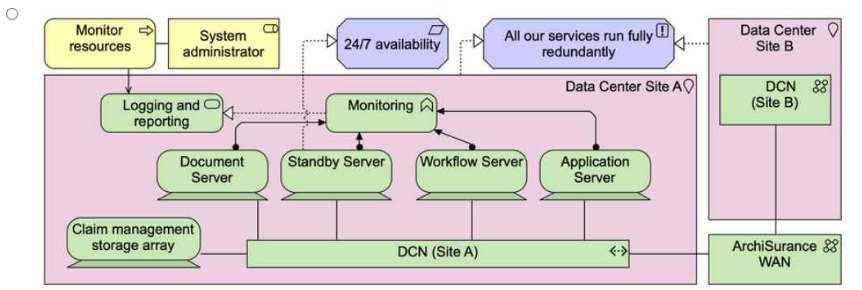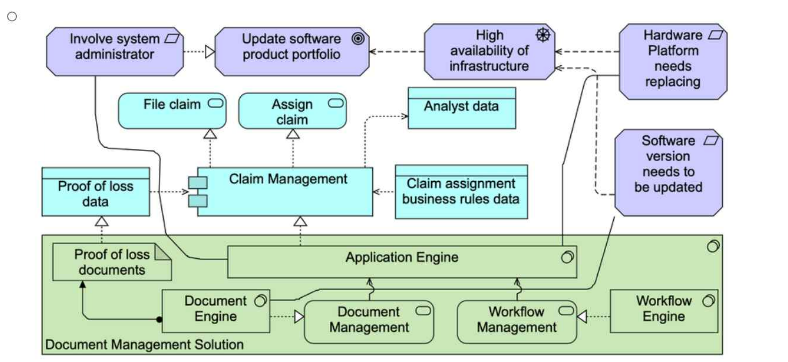In this scenario, the goal is to model the business processes, their sub-processes, the applications supporting these processes, and the data objects these applications access. Additionally, external services that access some of these data objects need to be shown. This includes capturing the key processes and their dependencies, as well as understanding how the applications interact with data and external services.
Key ArchiMate 3.2 Concepts Applied:
Business Processes and Sub-Processes:
Transaction Capture Process: Consists of two sub-processes:
Manual Exchange
Loans & Distribution (L&D)
This process is responsible for capturing transactions from users through different applications (Online Account Management, L&D Application).
Pricing Process: This process uses the Mutual Fund Prices from a third-party service and the Plan Balances to validate and price trades.
Trading Process: This process generates a Trade File and interacts with an external Trading Service.
Reconciliation Process: This final process updates the Plan Recordkeeping Data after confirming trades from the External Trading Service.
Applications and Data:
Online Account Management Application and L&D Application: These capture user inputs for transactions and maintain Transaction Data and Plan Balances.
Pricing Application: Uses Mutual Fund Prices and Transaction Data to generate Trade Data.
Trading Application: Submits Trade Data and receives a Confirmation File from the external Trading Service.
Reconciliation Application: Uses the Confirmation File to update Plan Recordkeeping Data.
External Application Services:
Third-Party Information Service: Provides Mutual Fund Prices.
External Trading Service: Processes trades and returns a Confirmation File.
Data Objects:
Transaction Data: Captured by the transaction capture processes.
Mutual Fund Prices: Received from the third-party service.
Trade Data: Generated by the pricing and trading applications.
Plan Recordkeeping Data: Updated by the reconciliation process after trade confirmation.
Why Option B is Correct:
Option B provides the most complete and accurate representation of the scenario. It captures the business processes (Transaction Capture, Pricing, Trading, Reconciliation) and their sub-processes, while showing the appropriate connections to the applications that support these processes.
It clearly depicts the data objects (Transaction Data, Plan Balances, Trade File, Mutual Fund Prices, Plan Recordkeeping Data) and their flows between the processes and applications.
The model also includes the external services (Third-Party Information Service and External Trading Service), showing how these interact with the internal applications and data objects.
It accurately represents the flow of Trade Data from the Pricing Application to the Trading Application, and the use of Mutual Fund Prices by the Pricing Process.
Why Other Options Are Incorrect:
Option A and Option D miss some critical connections between the applications and the external services. They also lack clarity in how the data flows between the processes and applications.
Option C does not adequately represent the interaction between the applications and the external services (e.g., Third-Party Information Service), which is a key requirement in this scenario.
Conclusion:
Option B provides the best and most accurate description of the business processes, applications, data objects, and external services involved in ArchiSurance's daily fund trading operations, following ArchiMate 3.2 standards for modeling business processes and applications.





















